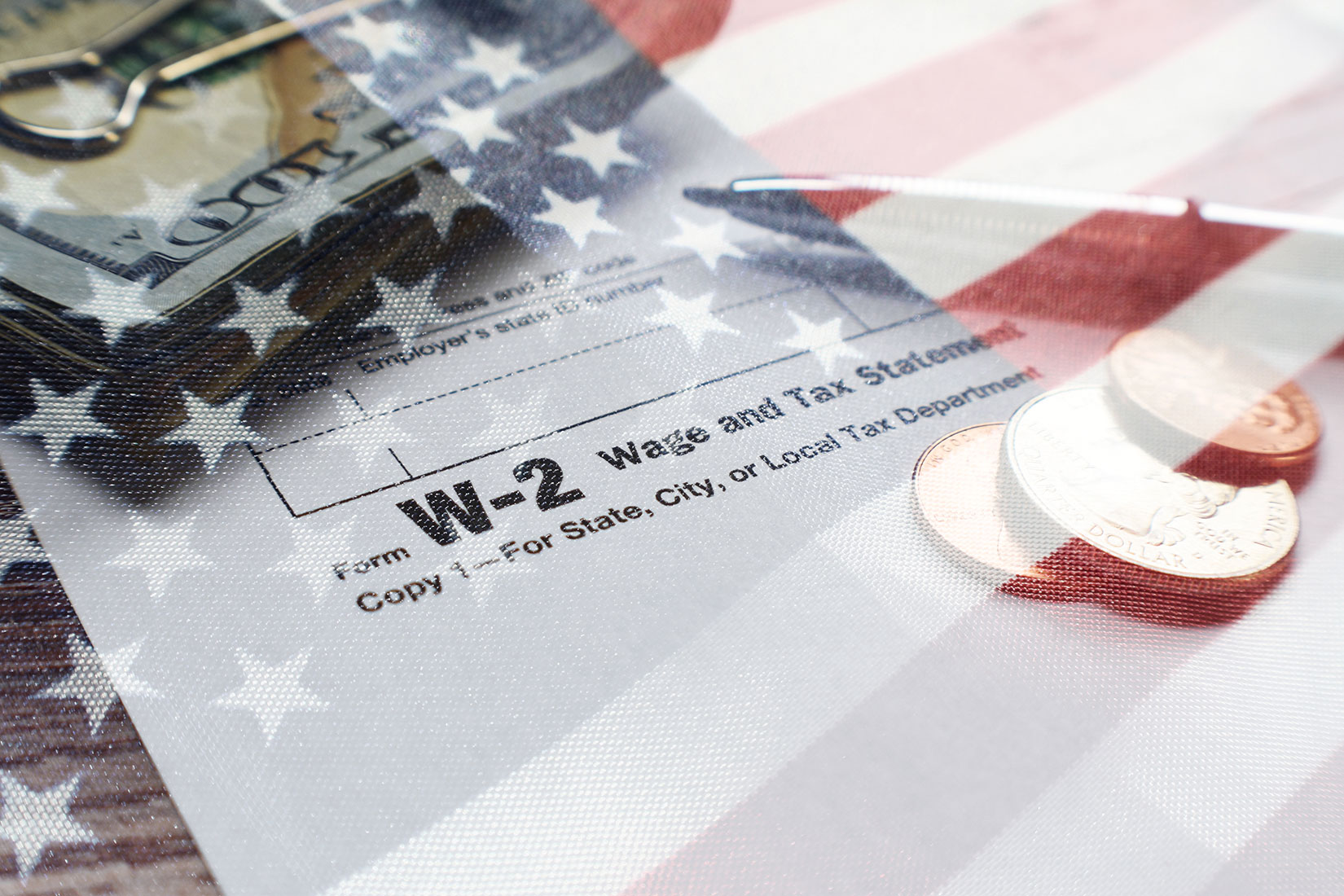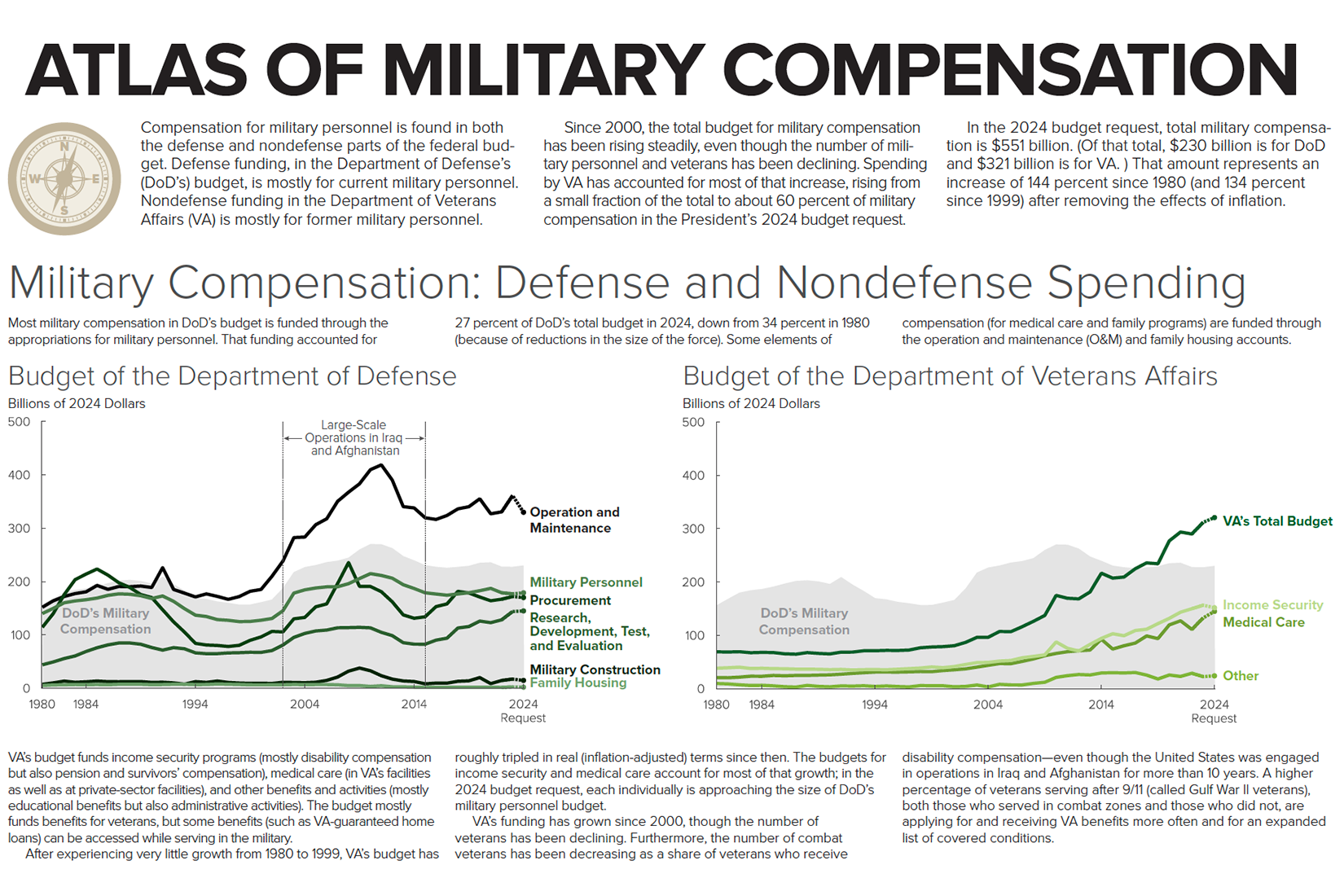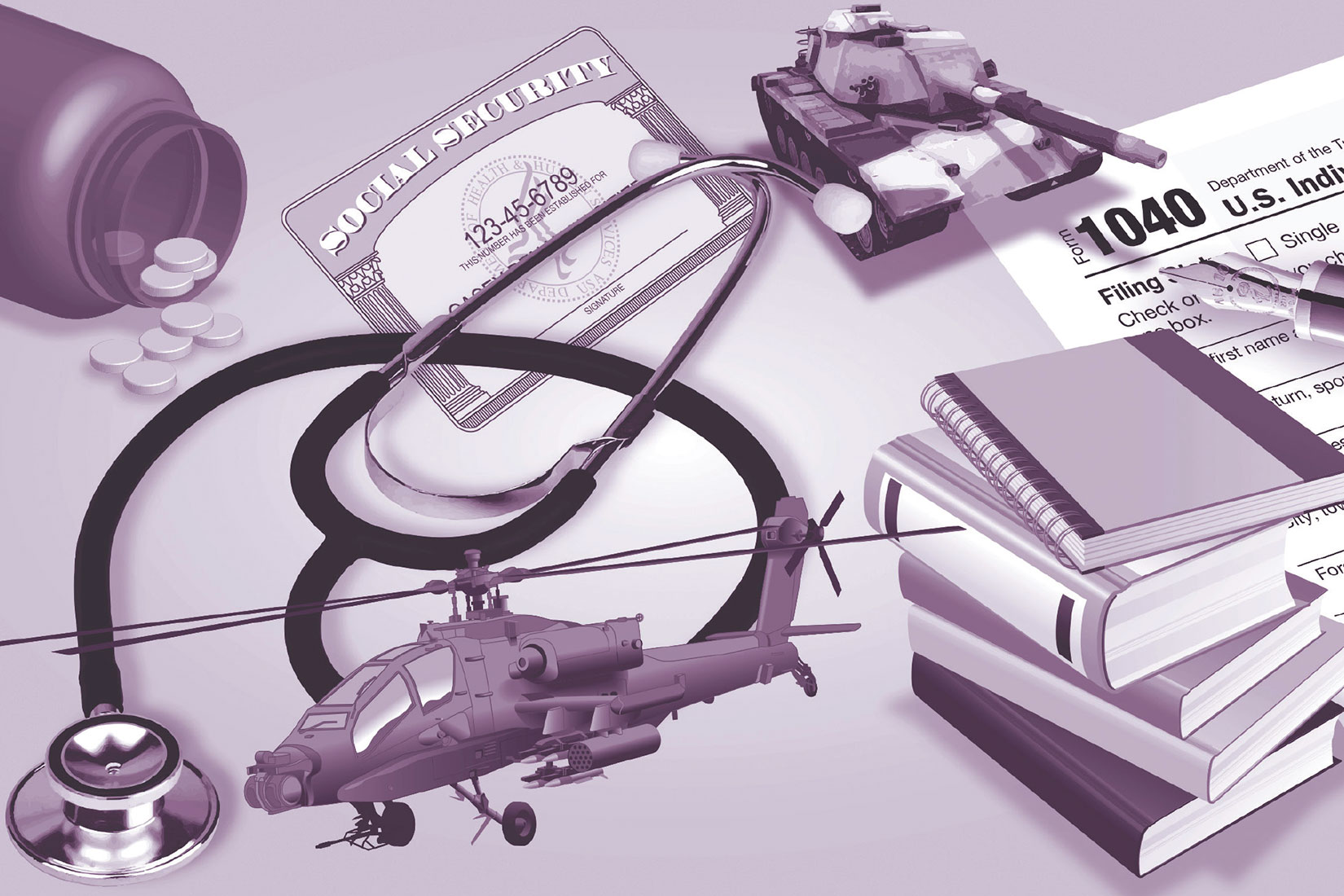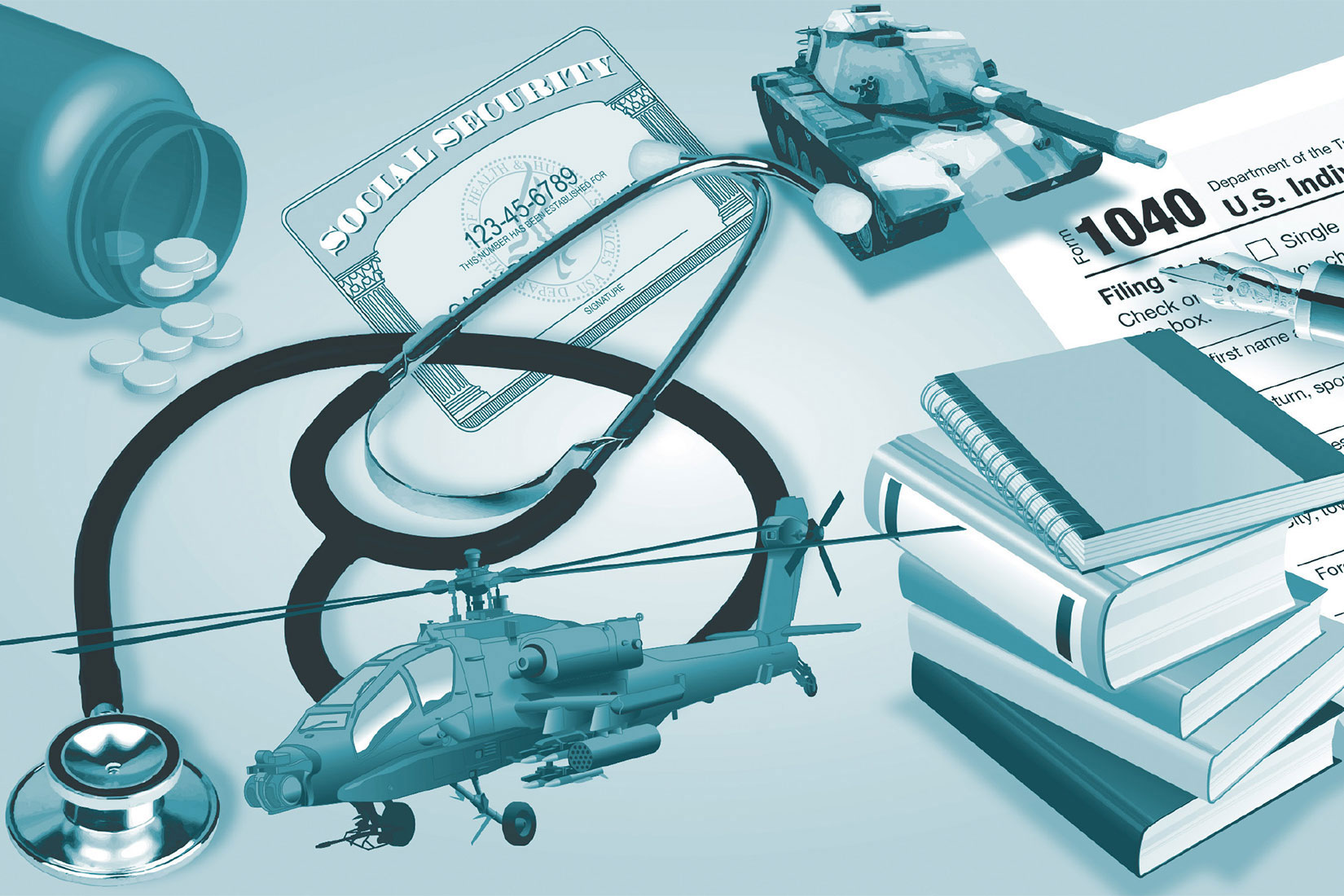CBO compared the earnings, personal income, and household income of working-age male veterans who received disability payments from the Department of Veterans Affairs with those of veterans who did not receive such payments.
Veterans' Issues
- Graphic
In the President’s 2024 budget request, total military compensation is $551 billion, including veterans' benefits. That amount represents an increase of 134 percent since 1999 after removing the effects of inflation.
- Report
CBO issues a volume describing 17 policy options that would each reduce the federal budget deficit by more than $300 billion over the next 10 years or, in the case of Social Security options, have a comparably large effect in later decades.
- Report
CBO issues a volume that contains short descriptions of 59 policy options that would each reduce the federal budget deficit by less than $300 billion over the next 10 years.
- Report
CBO describes how the Department of Veterans Affairs provides health care to many veterans through the Veterans Community Care Program and how that program has affected veterans’ access to care and other outcomes.
- Report
CBO describes VA’s mortgage guarantee program, provides estimates of the budgetary costs of the program, and compares those costs with expenditures for other federal guarantees.
- Report
Most Vietnam-era veterans are now retired. In 2018, their average income, including the disability compensation that some receive, was roughly comparable with the income of nonveterans their age.
- Report
This report examines military compensation and its effects on recruitment, retention, and motivation. CBO also provides a comparison with civilian compensation packages and examines five possible approaches for altering the way that DoD compensates military personnel.
- Report
In 2016, members of the reserve component received an average of $12,500 in benefits (measured in 2018 dollars) under the Post-9/11 GI Bill. This report describes their use of those benefits and compares how the reserve and regular components use their benefits.
- Report
CBO examines the differences between cash and accrual accounting for federal retirement and veterans’ benefits, the information that the two types of estimates provide, and ways to expand the use of accrual measures for such benefits.
- Report
From 2010 through 2016, the Veterans Benefits Administration spent $65 billion on educational benefits for 1.6 million veterans, spouses and children, mostly for veterans’ tuition, fees, and housing. In 2016, VBA spent an average of $17,400 per beneficiary.
- Report
To help assess budgetary risks, CBO has projected spending by the Department of Veterans Affairs through 2028 under three scenarios, a modified version of CBO’s baseline and two other scenarios involving more rapid spending growth.













